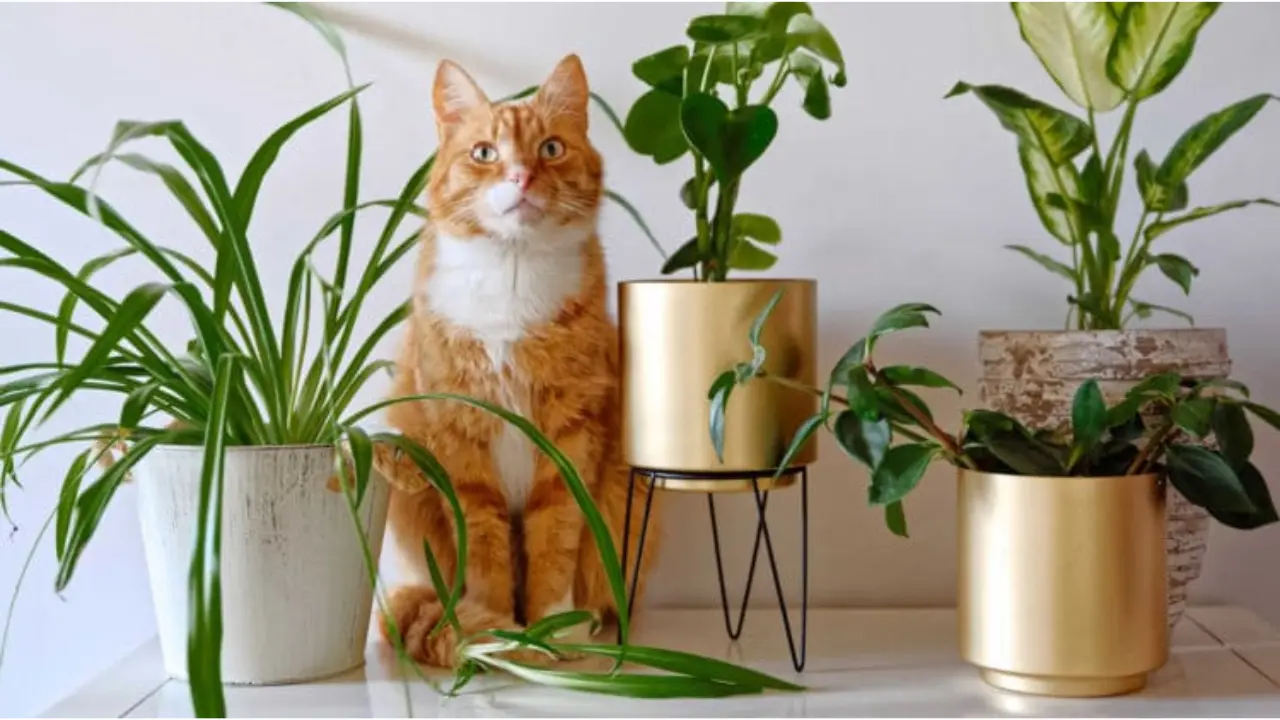With its vibrant green leaves and trailing vines, Pothos is a popular houseplant cherished for its beauty and low-maintenance nature. However, as a responsible cat owner, you must be aware of the potential risks certain plants can pose to your feline companion. This article will discuss whether pothos is toxic to cats and provide important information about the potential dangers and precautions associated with this plant.
Understanding Pothos and Its Appeal
Before delving into the safety of pothos for cats, let’s explore the characteristics that make this plant appealing to many.
Pothos, scientifically known as Epipremnum aureum, is a trailing plant that thrives in various conditions. Its heart-shaped leaves and trailing vines make it a popular choice for indoor and outdoor settings. Pothos is often praised for its ability to purify the air and its resilience in various light conditions, which adds to its allure as a houseplant.
Potential Dangers of Pothos for Cats
While pothos is a visually appealing plant, it’s essential to be aware of its potential dangers to cats.
Toxic Substances in Pothos
Pothos contains calcium oxalate crystals, which can cause irritation and discomfort if ingested by cats. These crystals are present in the plant’s leaves, stems, and sap. When a cat chews or bites into pothos, these crystals can cause oral irritation and gastrointestinal upset.
Signs of Pothos Toxicity in Cats
If a cat ingests pothos or comes into contact with its sap, it may exhibit sure signs of toxicity. These can include drooling, pawing at the mouth, vomiting, diarrhea, swollen tongue, difficulty swallowing, or increased salivation. If you observe any of these symptoms, it’s essential to seek veterinary attention promptly.
Precautions for Cat Owners
To ensure the safety of your cat, it’s essential to take certain precautions regarding pothos.
Preventing Exposure to Pothos
If you have pothos in your home, keep it out of reach of your cat. Cats are naturally curious and may be tempted to chew on or play with plants. Placing pothos in areas inaccessible to cats, such as high shelves or rooms they cannot enter, can help minimize the risk of exposure.
Creating a Safe Environment
In addition to preventing access to pothos, create a safe environment for your cat by providing alternative sources of stimulation and enrichment. This can include interactive toys, scratching posts, and designated play areas to keep your cat engaged and entertained.
What to Do If Your Cat Ingests Pothos
If you suspect or witness your cat ingesting pothos or coming into contact with its sap, take immediate action.
- Remove your cat from the plant and try to rinse its mouth with water if possible.
- Contact your veterinarian for guidance and advice.
- Monitor your cat closely for any signs of toxicity.
Cat-Friendly Alternatives to Pothos
If you’re concerned about the potential risks associated with pothos, consider opting for cat-friendly alternatives in your indoor greenery.
Safe options include spider plants (Chlorophytum comosum), Boston ferns (Nephrolepis exaltata), or cat grass (Dactylis glomerata). These plants can provide a similar aesthetic appeal without posing a risk to your cat’s health.
Conclusion
While pothos is a popular houseplant known for its beauty and resilience. It’s essential to understand the potential risks it can pose to cats. By being aware of the toxic substances in pothos and taking necessary precautions to prevent exposure, you can help ensure the safety and well-being of your feline companion.




